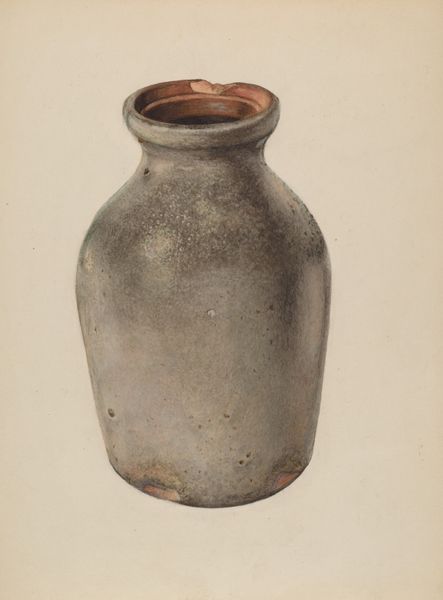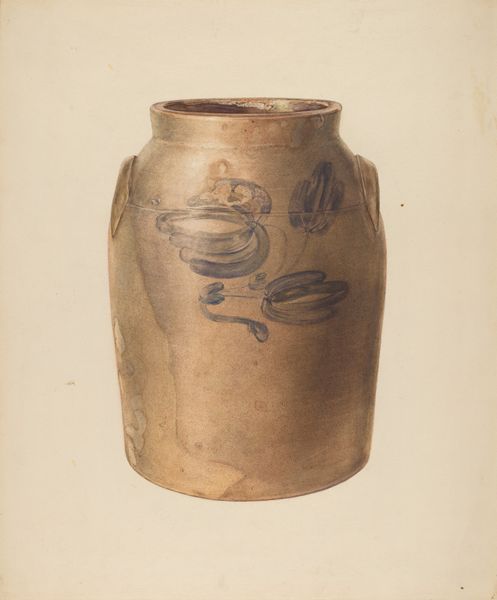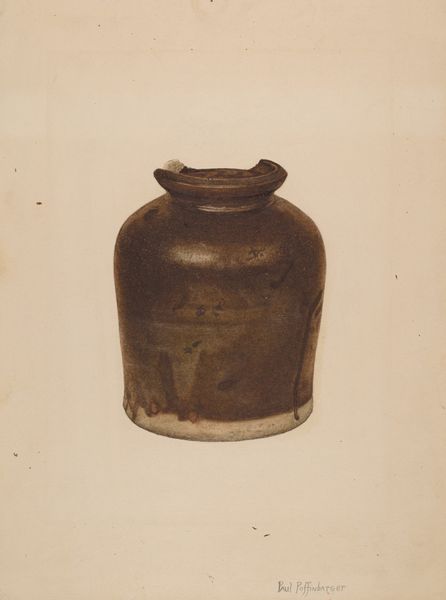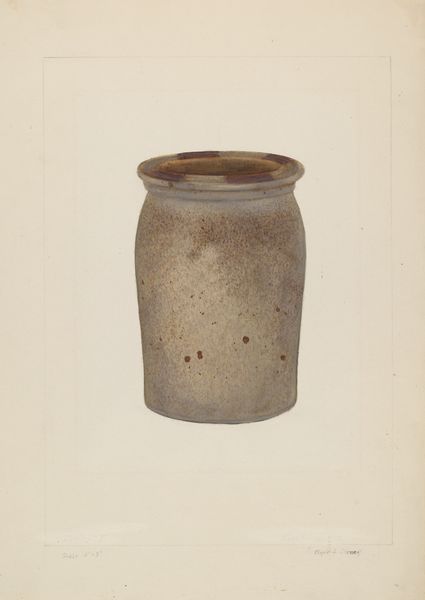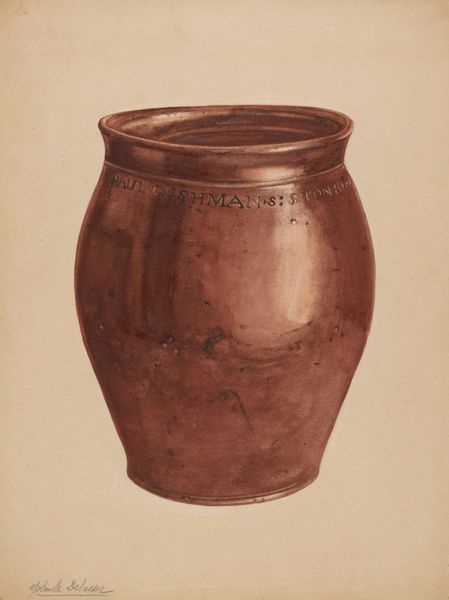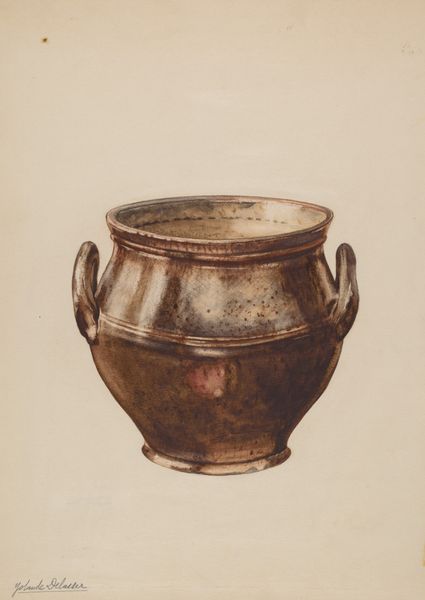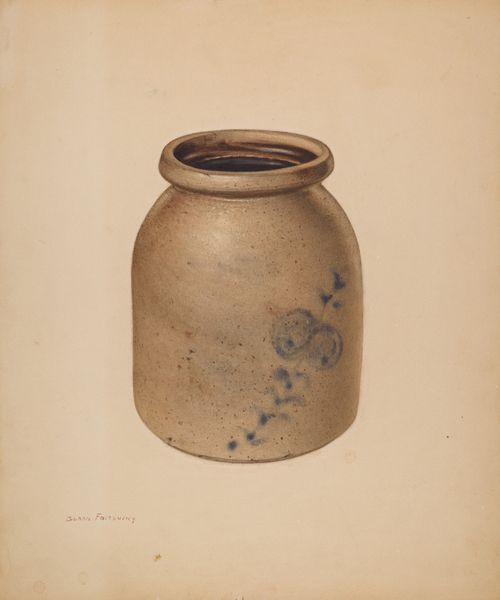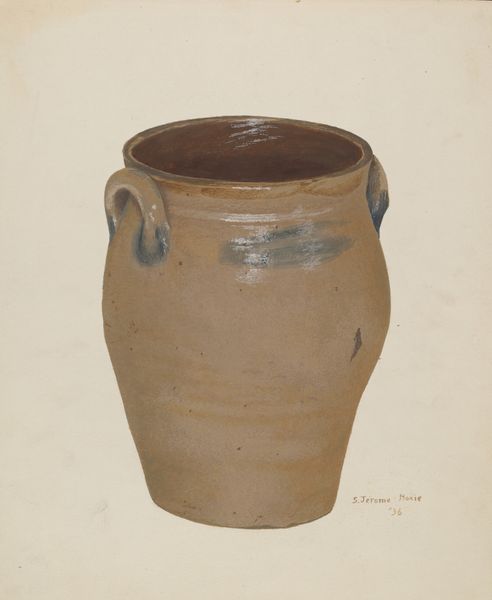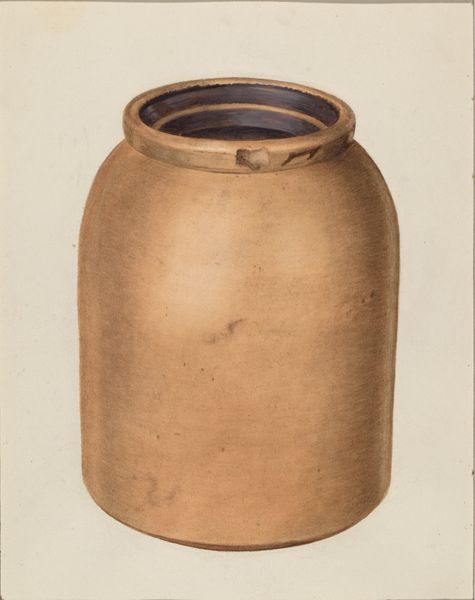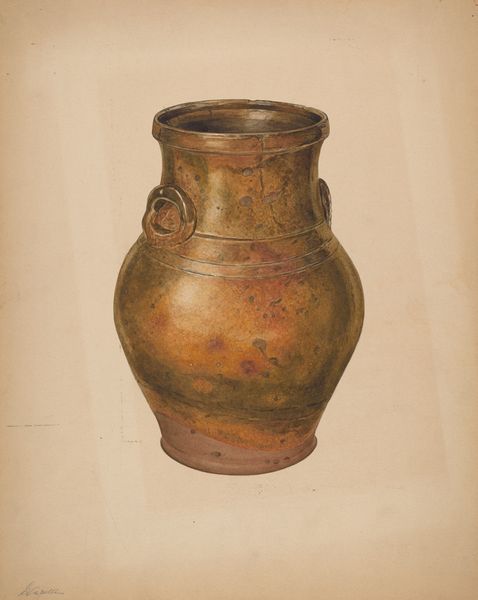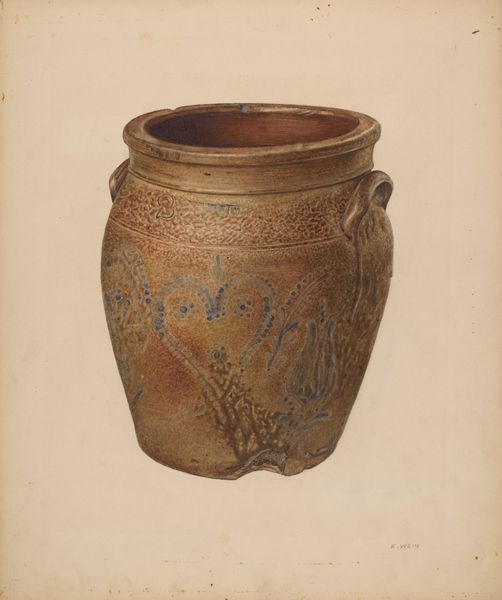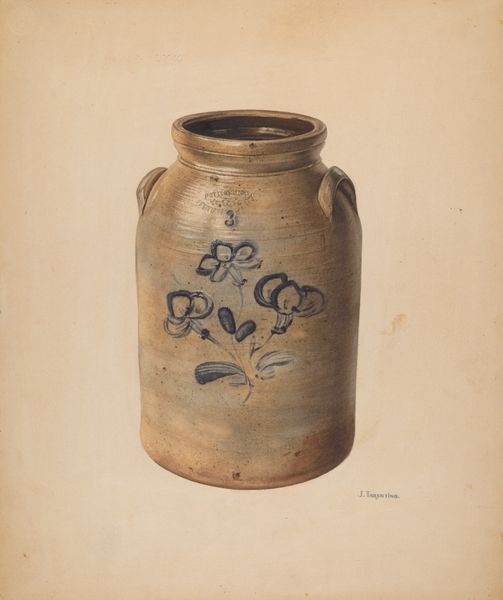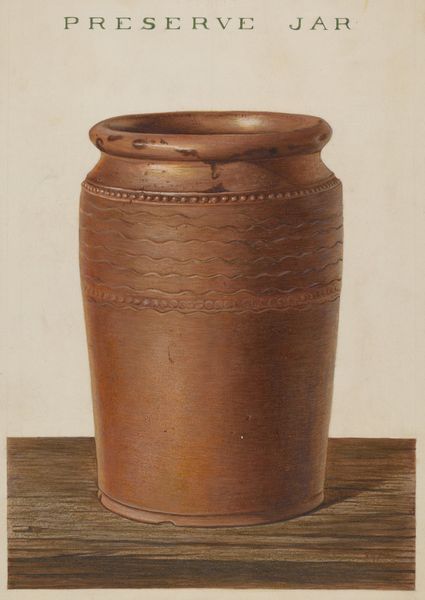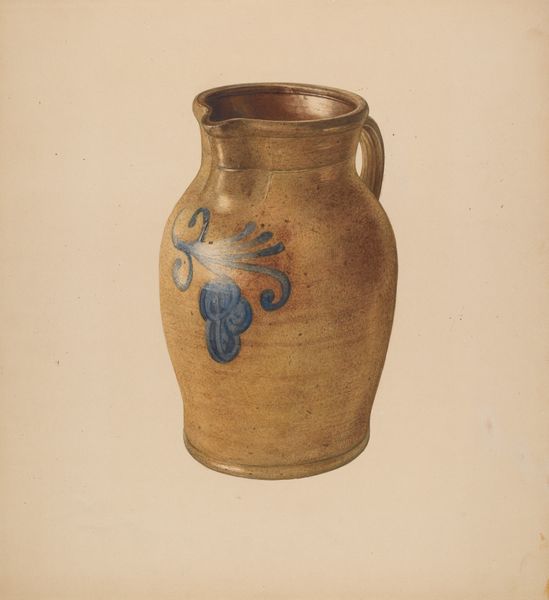
drawing, charcoal
#
drawing
#
charcoal drawing
#
charcoal
#
charcoal
Dimensions: overall: 29.4 x 38.2 cm (11 9/16 x 15 1/16 in.)
Copyright: National Gallery of Art: CC0 1.0
Curator: Here we have Margaret Golden's "Crockery Churn," created around 1941. It's a compelling charcoal drawing, isn't it? Editor: It has such a grounded feel, somehow—almost stoic. I'm struck by how the light and shadow give a real sense of the churn’s heft and solid form. It is quite utilitarian, isn't it? Curator: Absolutely. The materiality speaks volumes about rural life, the labour inherent in producing and preserving food, a craft often performed by women and marginalised communities. The simplicity belies the hard work represented. It's a drawing that challenges the distinction between ‘high art’ and craft, isn't it? Editor: Precisely. Considering its creation in the 1940s, what's fascinating is the depiction of everyday objects – elevating them beyond mere functionality. Do you believe it reflects the intersectionality of class and gender at that time, maybe during the war? Curator: Undoubtedly. It’s situated within a historical and social context where labor divisions were highly gendered, where domestic work, despite its necessity, often remained invisible. "Crockery Churn" brings that reality into view, demanding that we consider it art. The charcoal medium also feels significant; humble, elemental, mirroring the subject it represents. Editor: Indeed. There's something quietly subversive about focusing on this humble object and imbuing it with artistic merit through the medium of drawing, really bringing it back to raw materials of production. In terms of the social context, do you think the labor of butter churning speaks to any particular societal issues that can influence interpretation? Curator: I think about how labor laws impacted workers, women's place in society...It prompts considerations about access to resources, the gendered division of labour, the commodification of agrarian lifestyles. By bringing this into art, the artist encourages us to interrogate these realities through a critical lens. Editor: The churn, now divorced from its functional context, really transforms our understanding. I walk away thinking about how objects gain cultural significance in society and also thinking about labor exploitation. Curator: A stark reminder, if you will, that our world is formed by those who make and shape our surroundings daily, a sentiment that resonates.
Comments
No comments
Be the first to comment and join the conversation on the ultimate creative platform.
